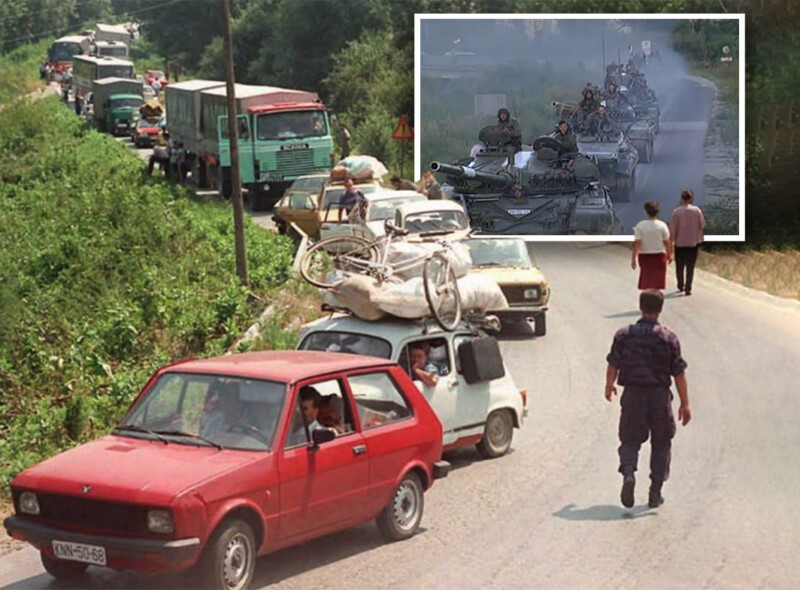Irgend was verstehe ich an der ganzen Diskussion nicht ganz. Wenn ich die Verbrechen der Ustascha und ihre verbrecherische Ideologie aufzeige und kritisiere, dann ist es ok. Es kommt auf kein Widerspruch ja, aber. Wenn ich die Verbrechen der Cetniks und deren kranke Ideologie thematisiere, dann relativiere ich weder die Ustasch, noch sonst irgendeine beschissene Ideologie, sondern das was sie getan haben. Relativieren ist dann, wenn man behauptet, dass die Cetniks nur mit den Faschisten und Nazis kollaboriert haben und nicht serbische Bevölkerung massenweise ermordet haben um die serbische Bevölkerung zu schützen.
Cetniks waren keine Antifaschisten, Cetniks waren Massenmörder und Kriegsverbrecher, so leid es mir tut.

 military-history.fandom.com
military-history.fandom.com
Alternativ kann ich dieses Buch empfehlen, der Autor hatte diesbezüglich Einsicht in alle Dokumente und hat u.a. auch Tito interviewt.

 www.goodreads.com
www.goodreads.com
Auch zu empfehlen:
Serbia and the Serbs in World War Two
There is no doubt that from spring 1941 to the end of the war Draža Mihailović’s Chetniks played an important role in the territory of the pre-war Kingdom of Yugoslavia.1 It is also certain that most of them were active collaborators of the Axis forces for most of that period. However, there are still some historians in Serbia, the authorities and some politicians in that country, as well as in the part of Bosnia-Herzegovina in Serbian possession (Serbian Republic — Republika Srpska), who view the Chetniks as Allied fighters who actively fought against Axis forces in Yugoslavia. Moreover, in December 2004 the National Assembly of the Republic of Serbia adopted the law on the rights of combat warriors, war invalids, and their families which officially promoted Mihailovićs Chetniks (the members of Jugoslovenska vojska u otadžbini [the Yugoslav Army in the Fatherland] and the members of Ravnogorski pokret [Ravna Gora Movement]) into the ranks of anti-fascist fighters on a par with Tito’s Partisans (members of the NarodnooslobodilaČka vojska Jugoslavije [the People’s Liberation Army of Yugoslavia]).2 In May 2010 Belgrade’s Military Museum (Vojni muzej) presented artefacts and data related to Draža Mihailović.3 There is no doubt that any museum exhibition on World War Two in former Yugoslavia and in Serbia should deal with him and with his Chetniks, but the problem is that they were presented exclusively as a resistance movement and therefore as an Allied military force. The same image of Chetniks as a resistance movement is present in history textbooks which are in use in Serbian schools, as discussed in Dubravka Stojanovićs contribution to this volume.4
....
Although he formally advocated the resurrection of the Kingdom of
Yugoslavia, his plans were actually based on the idea of creating a Greater
Serbia as the dominant entity within a future Yugoslav state (Greater
Yugoslavia). So his plans were opposite even to the structure of Yugoslavia
as it had existed before the defeat and collapse in April 1941, with the
Banate of Croatia (Banovina Hrvatska) as an integral and important element. In a way, such a structure was even reflected in the composition
of the Yugoslav government-in-exile.8 The government soon recognized
Mihailovic´ as its military commander in the country, and on 11 January
1942 he even became a member of that government as its minister of the
army, navy, and air force.9
His plans for the future were based on such programmes as the one
entitled ‘Homogena Srbija’ (‘Homogeneous Serbia’). It was composed on
30 June 1941 by prominent Chetnik leader and later Mihailovic´’s political
adviser Stevan Moljevic´.10 This plan envisioned the creation of a
homogeneous Serbia which has to include the entire ethnic area
populated by Serbs and to secure for itself the necessary strategic and

 link.springer.com
link.springer.com
Cetniks waren keine Antifaschisten, Cetniks waren Massenmörder und Kriegsverbrecher, so leid es mir tut.

Chetniks
Chetniks, or the Chetnik movement (Serbo-Croatian language: Četnici, Четници, pronounced [tʃɛ̂tniːtsi]; Slovene language: Četniki , Macedonian language: Четници, Četnici) were Serb nationalist and monarchist paramilitary organizations from the first half of the 20th century, formed as a...
Alternativ kann ich dieses Buch empfehlen, der Autor hatte diesbezüglich Einsicht in alle Dokumente und hat u.a. auch Tito interviewt.

War and Revolution in Yugoslavia, 1941-1945: The Chetni…
Discover and share books you love on Goodreads.
Auch zu empfehlen:
Serbia and the Serbs in World War Two
There is no doubt that from spring 1941 to the end of the war Draža Mihailović’s Chetniks played an important role in the territory of the pre-war Kingdom of Yugoslavia.1 It is also certain that most of them were active collaborators of the Axis forces for most of that period. However, there are still some historians in Serbia, the authorities and some politicians in that country, as well as in the part of Bosnia-Herzegovina in Serbian possession (Serbian Republic — Republika Srpska), who view the Chetniks as Allied fighters who actively fought against Axis forces in Yugoslavia. Moreover, in December 2004 the National Assembly of the Republic of Serbia adopted the law on the rights of combat warriors, war invalids, and their families which officially promoted Mihailovićs Chetniks (the members of Jugoslovenska vojska u otadžbini [the Yugoslav Army in the Fatherland] and the members of Ravnogorski pokret [Ravna Gora Movement]) into the ranks of anti-fascist fighters on a par with Tito’s Partisans (members of the NarodnooslobodilaČka vojska Jugoslavije [the People’s Liberation Army of Yugoslavia]).2 In May 2010 Belgrade’s Military Museum (Vojni muzej) presented artefacts and data related to Draža Mihailović.3 There is no doubt that any museum exhibition on World War Two in former Yugoslavia and in Serbia should deal with him and with his Chetniks, but the problem is that they were presented exclusively as a resistance movement and therefore as an Allied military force. The same image of Chetniks as a resistance movement is present in history textbooks which are in use in Serbian schools, as discussed in Dubravka Stojanovićs contribution to this volume.4
....
Although he formally advocated the resurrection of the Kingdom of
Yugoslavia, his plans were actually based on the idea of creating a Greater
Serbia as the dominant entity within a future Yugoslav state (Greater
Yugoslavia). So his plans were opposite even to the structure of Yugoslavia
as it had existed before the defeat and collapse in April 1941, with the
Banate of Croatia (Banovina Hrvatska) as an integral and important element. In a way, such a structure was even reflected in the composition
of the Yugoslav government-in-exile.8 The government soon recognized
Mihailovic´ as its military commander in the country, and on 11 January
1942 he even became a member of that government as its minister of the
army, navy, and air force.9
His plans for the future were based on such programmes as the one
entitled ‘Homogena Srbija’ (‘Homogeneous Serbia’). It was composed on
30 June 1941 by prominent Chetnik leader and later Mihailovic´’s political
adviser Stevan Moljevic´.10 This plan envisioned the creation of a
homogeneous Serbia which has to include the entire ethnic area
populated by Serbs and to secure for itself the necessary strategic and



